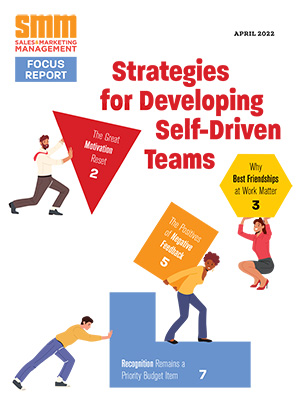
When Gail Tifford, vice president for media and digital engagement at Unilever North America, couldn’t find a quiet spot at a 2014 convention to discuss business with Stephen Quinn, who was then Walmart’s chief marketing officer, she knew where to head. Tifford brought Quinn to the Girls’ Lounge, a gathering spot for women that was started a couple years earlier by Shelley Zalis, a former chief executive of a Hollywood research firm who is leading an effort to advance corporate women.
As described in a recent New York Times article, the Girls’ Lounge is “a space where businesswomen can relax and mingle between meetings and seminars.” It began at the Consumer Electronics Show in Las Vegas and Zalis plans to bring it to 10 major business events this year. It was at Davos, Switzerland in January and South by Southwest in Austin, Texas, in March. The Girls’ Lounge offers fruit to snack on. Hair, nail and makeup experts offer mini-makeovers. Pink flowers, throw pillows and plush sofas add to the slumber-party feel.
“There were women in robes with their hair in towels,” Tifford recalled with a laugh about the environment she introduced Quinn to. “Stephen and I went out to the terrace and had a very productive one-hour meeting.”
Quinn, who is now retired, told the Times the experience taught him something important about how women must feel when they are surrounded by men. “It was kind of uncomfortable for me,” he said. “I clearly didn’t fit in and distinctly had a feeling of a lot of eyes on me. Voice in my head: ‘What is he doing here?’ Probably wasn’t true, but my mind went there.”
The Gender Stats
Tifford could be excused for feeling that turnabout was fair play. B2B sales has long been a male-dominated world. It’s changing, but slowly. Although women hold roughly half of all sales positions, according to 2014 data from the U.S. Bureau of Labor Statistics (BLS), the breakdown by industry tells a different story. Only one-third of sales positions in securities and financial services are held by women; less than 30 percent in services and manufacturing, and a mere 15 percent in parts.
It starts at the top. Women in top sales executive positions are rare, according to a report by Peak Sales Recruiting, which provides B2B sales recruiting for companies in the technology, telecom and other sectors. Peak Sales Recruiting cites a 2014 study conducted by law firm Fenwick & West LLP that found that women held only 11.7 percent of the senior sales executive roles among 150 largest companies in Silicon Valley (as measured by revenue) that have such a position (77 of the 150 companies). Only one woman has held the top sales executive role in any of the top 15 companies in the group over the 19-year period the study has existed.
It’s not a diversity struggle that is contained to the technology industry. Overall, women hold fewer management and even fewer executive sales roles than men. BLS data shows that women make up just 26 percent of sales supervisors in all non-retail industries.
And a 2014 LinkedIn report states that growth in the percentage of women in sales lags behind the percentage of women in the workplace as a whole. The percentage of women in the workforce, as measured by the LinkedIn user base, increased from 37 percent to 41 percent since 2004, while the percentage of women in sales increased from 36 percent to 39 percent.
A 2015 Pew Research report states that women in business continue to face age-old battles:
Women are far more likely than men to see gender discrimination in today’s society. About two-thirds of women (65 percent) say their gender faces at least some discrimination compared with 48 percent of men who believe women face some discrimination.
Women and men are seen as equally good business leaders, but gender stereotypes persist.
A 46 percent plurality give men the edge over women when it comes to running a large oil or gas company. But the public is 2½ times more likely to say a woman, rather than a man, would do a better job running a major hospital or a major retail chain.
Diversifying Makes Business Sense
“Bringing more women into sales roles at every level quite simply makes business sense,” the Peak Sales Recruiting report states. “In a hyper competitive environment, companies must consider every viable candidate for sales positions. If a company, business unit or sales manager consciously or unconsciously passes over female candidates in favor of equally or less qualified male candidates, that organization is likely to be missing the opportunity to hire very talented people.
“A more diverse sales force also is more likely to reflect the make-up of customer organizations and have representatives that can connect and nurture strong relationships with a diverse customer base,” the report continues. “If everyone in the sales organization looks the same and has similar experiences and viewpoints, they may not always be able to find common ground with customers and prospects.”
So what is a woman who is interested in sales to do? For starters, say many we talked with, take heart — and confidence — in the fact that women possess some innate skills that are a good fit for today’s B2B sales environment.
“Sales today is more focused on building a strong relationship with the client. It’s a hundred percent focused on their needs,” says Jill Konrath, an accomplished sales consultant and author. “It’s about asking good questions; it’s about listening well; it’s about investing time to plan prior to meetings to ensure your time with the client is valuable from their perspective. Women excel at all of those things.”
Numbers don’t lie
The statistics support Konrath’s argument. Research by Xactly, a leading provider of enterprise-class, cloud-based, incentive compensation solutions, shows that women generally outperform men 70 to 67 percent when measured by quota attainment. And women add stability, staying in their roles for longer than men by nearly one year.
What’s more, despite earning less, female leaders prove to be generally more effective than their male counterparts when scored by managers, peers, direct reports and others in 16 leadership functions, according to research by Zenger Folkman consultancy group. Of the 16 functions, females were rated more positively in 12.
“The bias of most people is that females would be better at nurturing competencies such as developing others and relationship building. While this is true, the competencies with the largest differences between males and females were taking initiative, practicing self-development, integrity/honesty, and driving for results,” the report states.
The Confidence Gap
These findings and others like them should bolster women’s confidence in themselves, but as authors Melanne Verveer and Kim K. Azzarelli explain in their new book, “Fast Forward: How Women Can Achieve Power and Purpose,” one major obstacle facing women as they seek to achieve their goals is a confidence defect — even at the highest levels of leadership.
Verveer and Azzarelli point to research by Katty Kay and Claire Shipman, journalists who interviewed scores of highly accomplished and powerful women for their own book, “Womenomics.” They reported that despite their achievements, some of the most successful women they met admitted to lacking confidence. Kay and Shipman described “the power centers of this nation” as “zones of female self-doubt — that is, when they include women at all.”
Kay and Shipman dug further. In their second book, “The Confidence Code,” they reported on study after study that proved not only is the confidence gap between men and women real,
but it hampers women’s performance on everything from school exams to salary negotiations and promotions.
“Everyone experiences fear in the face of a challenge, or when one is trying something new. But Kay and Shipman were struck by the persistence and perniciousness of this male-female confidence gap,” Verveer and Azzarelli write.
Confidence and How to Get It
What is confidence anyway, they ask. Kay and Shipman are partial to a description from Richard Petty, a professor of psychology at Ohio State University: “Confidence is the stuff that turns thoughts into actions.”
Several women we spoke with for this story noted that Sheryl Sandberg’s book “Lean In” explored one common way the confidence gap plays out in corporate America. Sandberg points out that men, more often than women, will apply for jobs that (supposedly) require skills they haven’t yet mastered. “An internal report at Hewlett-Packard revealed that women only apply for open jobs if they think they meet 100 percent of the criteria listed. Men apply if they think they meet 60 percent of the requirements,” Sandberg wrote.
Konrath feels it may not be a matter of a confidence gap between men and women as much as it’s women’s proclivity to express self-doubts more so than men, especially when starting out in sales. “Sales is a scary profession because your success is so visible and your paycheck is dependent upon it. Anybody’s success in sales directly correlates to their ability to keep their fear at bay until their confidence becomes sufficient so they can succeed. That’s male or female,” she says. “I spent my first year in sales terrified — living in fear that I wasn’t going to be able to do it.”
Konrath and other women in leadership roles that we spoke with credit managers and mentors for helping them grow and gain confidence in the early stages of their career. Mentoring is an essential component of helping women succeed in sales and in any business setting, they state.
“I had one star female mentor who was my manager at the beginning of my career,” says Konrath, who quit teaching to take a sales job at Xerox. “She believed in me when I didn’t. I can’t tell you how many times I gulped and she kept telling me I could do it. I wanted to succeed, but I didn’t think I was cut out for it. I only had males around me as role models and I wasn’t doing things quite their way. What was important to me was she believed in me when I didn’t.”
Joanne Black says her experience is that plenty of women have confidence in themselves, but many lack the assurance to express their ideas in a room that’s lopsided with men. She recalls putting in extra preparation before a meeting early in her career in attempt to be among the smartest people in the room. If you do that, you can’t get pushed off your game.
“When you talk about confidence, it’s looking at how many times are you being pushed out and challenged, and then you just get off,” she says.
A Responsibility to Mentor
Konrath and other women who have risen through the B2B sales ranks with guidance from mentors — both male and female — stress the importance of paying that forward. Tina Sampson started her sales career some 20 years ago as a trainee with Hyatt Hotels. She quickly ascended through the ranks. By 2002, she was director of sales at Keystone Resorts, then moved on to become vice president of sales and marketing at Gaylord National Harbor Hotel near Washington, D.C. Now, she is vice president of group sales for Vail Resorts Hospitality.
Despite her success, Sampson says she never viewed herself as a role model for other women in business until others told her she was. “When I left Gaylord, I started hearing feedback from women that I was a role model for them because I was married and had kids and was still able to have a career. Once I started hearing that, I realized I have to own that role and take responsibility for being a female role model for other women.”
How does that play out? Sampson recalls starting in a managerial role at one company in which two female salespeople were underperforming. “The male VP told me I would probably need to get rid of them,” she says. Instead, she worked with them and discovered they were intimidated by the male leader and his leadership style. “I was able to mentor them and find their strengths. Within five years of arriving at that hotel, both of them in different years had won salesperson of the year at the company.”
In coaching female sales managers now, Sampson says one thing she focuses on is getting them comfortable owning their success. “Women have a propensity to chalk it up to the team. They need to catch themselves doing that when they are really having a direct impact. I walked up to one of my best sales managers one time and said, ‘You are, year after year, one of the best sales managers. How do you do it?’ She needed to learn how to teach other people how she achieves what she does, yet she had no idea why she was successful, so we went through a self-awareness mentoring program with her.”
Mentorship vs. Sponsorship
Mentoring women is one way to support their career and promote their success. Sampson and others emphasize that it’s also important to promote high-achieving women to those in the company that can make a difference.
“Supporting them doesn’t just mean saying, ‘You can do it.’ It means setting up other people’s expectations of that person. Going to the five different stakeholders that a salesperson or sales manager works with and advocating for her,” Sampson says.
That philosophy is embraced by Lori Richardson, another woman who rose through the B2B sales ranks and eventually launched her own sales consultancy, Boston-based Score More Sales. Richardson prefers the term “sponsor” over “mentor.”
“Mentors can give advice and ideas, and that can be very important. But a sponsor is someone internal who has more power — who can advise, but who also can recommend you and help advance your career,” she says. “They can put you on the right team, put you in the right group and send you to the right events. A lot of men have had sponsors for years. Women have gotten mentors to help them maneuver within a company, but it really takes a sponsor to make things happen.” (Read more of Richardson’s comments here.)
Where To Go From Here
“In general, improving gender diversity requires a concerted effort to increase the number of women in sales roles and to support talented women to move up into roles with greater responsibility,” states the 2015 Peak Sales Recruiting report entitled “The State of Women in Sales.”
“The first step is for companies to determine whether they do, in fact, have a gender diversity problem in sales. Only with that information can companies identify whether anything needs to change. Then, if they do have a problem or just concerns about maintaining gender diversity, they need to identify the best way to address the situation.”
The report suggests breaking down gender diversity data in subgroups — by product lines, division, geographic location, etc. — to get a clearer picture of how your sales force is organized. By doing so, you can pinpoint where gender diversity is weakest and, potentially, what is causing the problem.
“With that targeted information, companies can focus their efforts and identify the underlying reasons for this lack of diversity to develop an appropriate response. It is important to emphasize that any such efforts are not ‘quotas.’ Few things will prevent new salespeople from thriving than any sense that they are there just to fulfill some vague diversity metric.”
Significant strides in gender diversity in B2B sales — a world that is still male-focused — requires concerted effort at every stage, from recruiting and hiring to onboarding and promoting from within. There is a wealth of data available to make the case for building a gender diverse sales team. But making the case doesn’t just mean walking into the office with an armful of reports, warn Verveer and Azzarelli, authors of “Fast Forward.” You must understand the goals of your company and your division, how women intersect at various levels of the organization’s value chain, and what opportunities exist to make a difference.
“Making change happen isn’t easy,” they state. “Get comfortable with being uncomfortable. One way to keep going is to find your people. By that we mean find the people within or outside your organization who share your vision. In our experience, good things happen when you surround yourself with positive people.”



